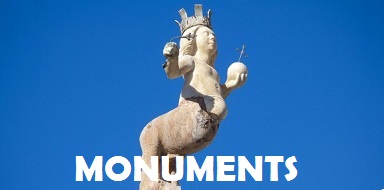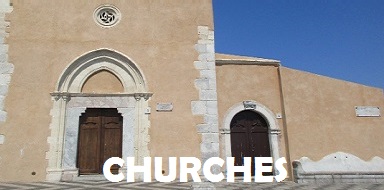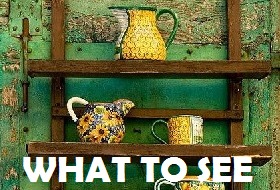Surroundings Taormina
Destinations and sites of interest reachable from Taormina.Would you like some advice for a trip Surroundings Taormina? From picturesque mountain towns to beautiful white beaches, from romantic gorges to film scenarios.
Here’s what to do and see around Taormina, information and practical advice on routes, routes and places of interest of Taormina surroundings. These are the special countries in the surroundings Taormina.
They are indicated by alphabetical order and with the relative distance from Taormina:
- ALÌ TERME – to 27 km
- ANTILLO – to 32 km
- CASALVECCHIO SICULO – to 23 km
- CASTELMOLA – to 1 km
- CASTIGLIONE DI SICILIA – to 14 km
- CASTROREALE – to 64 km
- CESARÒ – to 70 km
- FIUMEDINISI – to 30 km
- FLORESTA – to 65 km
- FORZA D’AGRÒ – to 8 km
- FRANCAVILLA – to 14 km
- GALLODORO – to 5 km
- GIARDINI NAXOS – to 3 km
- GORGES OF ALCANTARA– to 21 km
- ITÀLA – to 18 km
- LETOJANNI – to 5 km
- MANDANICI – to 29 km
- SAVOCA – to 20 km
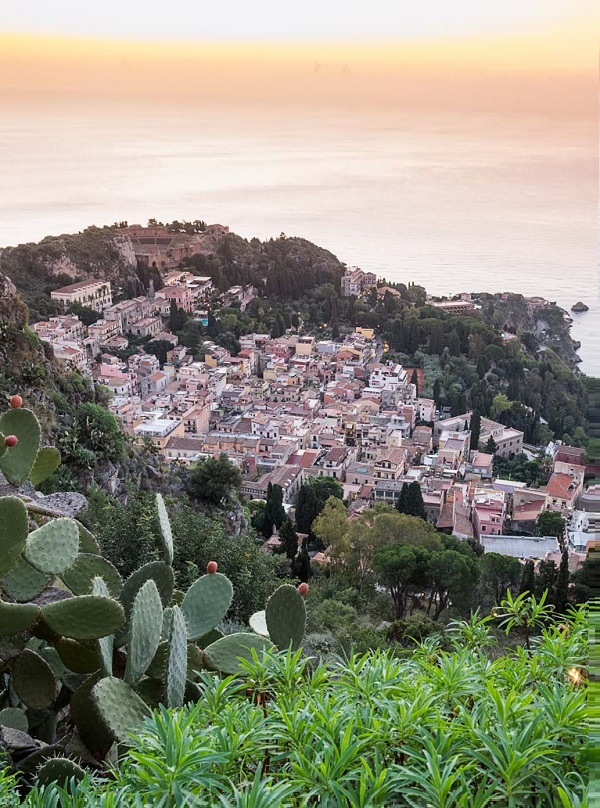

ALÌ TERME
Surroundings of Taormina, Km (16 miles) north of Taormina on the Ionian coast between Scaletta Zanclea and Nizza di Sicilia is the hydrothermal resort of Alí Terme: water and mud treatments suitable for chronic arthropathies, skin complaints, gynecological problems and inflammation of the respiratory system are available here.
There are two spas: Granata Cassibile and Marino, respectively using the waters and muds of five and two springs. The water temperature varies between 28 and 46° C. They are rich in boric acid, sulphur, sodium bromide, chloride, iodide and carbonic acid.
Easy to reach, a treatment here is also good for your health with the added attraction of a beach, archaeological sites and beautiful coastal and hill scenery nearby.
ANTILLO
In the Montagna Grande range of the southern Peloritan mountains, its history is bound to that of Savoca and the and the inhabitants are given over to agriculture and stock farming.
Antillo is immersed in the Valle D’Angri, as a pleasant, sly little village whose 900 inhabitants hardly make it a rural reality that lives its natural enchantment well inserted in a soft landscape of high forest density. Between hill and mountain, the tiny urban center occupies a discrete portion of the mountain stretch of the river basin declared a Site of Community Importance due to its huge environmental heritage.
Antillo was originally born as a village of shepherds in Greek times. He saw the passage of Ostrogoths and Byzantines following the Normans. Sicily historically as a crossroads of different cultures and civilizations, many of them actually occupying and establishing the Barony under which the fief of Antillo was ruled, subjected for 7 centuries until the abolition of the feudal regime in 1812.
Antillo, a place that for years has been combining alternative tourism that has gone more into folkloristic and gastronomic baggage in search of traditions, scents and flavors of a proverbially generous and affable Sicilian land. An oasis where you can relax and make suggestive excursions among very beautiful sceneries and itineraries, where the Mediterranean scrub is made to thicken pine forests, oak forests and especially chestnut groves.
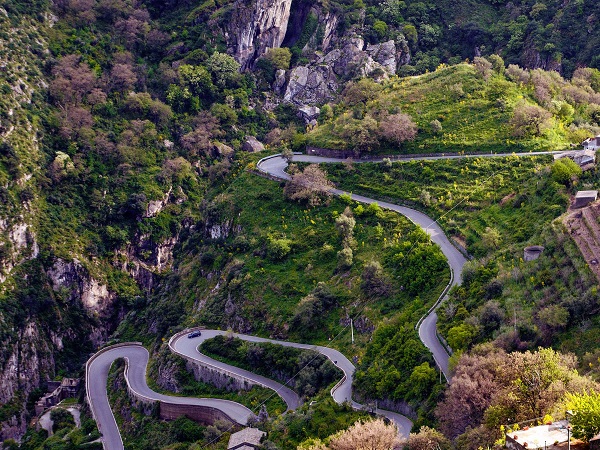

CASALVECCHIO SICULO
It lies in the southern Peloritan mountains on the south eastern slopes of Mt. Sant’Elia. The village has Arab origins and was mentioned in 1130 as Calabiet, part of the feudal lands of the town of Savoca and until 1812 it belonged to the bishops of Messina.
From 1928 to 1939 Casalvecchio the abolished commune was joined to the town of that of Santa Teresa di Riva. The inhabitants devote themselves to primary activities. The main church (Sant’Onofrio) with a baroque facade houses an Epiphany by G. Camarda (1626), a precious marble after and in the treasury, a statue of the saint in embossed silver and a 17th C. chalice.
Nearby, on the left bank of the Agrò river rises a national monument, the church of saints Pietro e Paolo, of Basilian origin, rebuilt in 1172 by the master builder Gerardo il Franco.
Running along the outer walls, in alternate layers of red bricks, black lava stones and wite limestone are slim pilaster strips, connected to intertwining pointed arches, crowned by crenellated work. The interior has three naves with semi-circular apses, the center one being rectangular.
The church is managed by the Archaelogical Park of Naxos Taormina.
Visits from October to March: 9.00am-1.00pm – from March to September: 9.00am-1.00pm and 3.00pm-7.00pm. Free entrance.
Infoline: 0039 340 398 99.39 – urp.parco.archeo.naxos@regione.sicilia.it – www.parconaxostaormina.com
CASTELMOLA
Surroundings of Taormina, Castelmola is a small medieval town perched on a mountain-peak overlooking Taormina and lies about 550 mts (1580 ft) above the sea level offering a magnificent view of the sea, Taormina, the coast of Calabria and Mt. Etna.
It counts slightly more than 1000 inhabitants. Very famous for the production of almond-wine and embroidery. The town center has two churches, the Mother Church which is a hodgepodge of architectural styles, and the Church of St. George, which dates from 1450 and is noted for its bell-tower. St. George’s day, april 23, is a popular attraction for people who enjoy patronal festivals.
Many places are to be visited, such as the Spanish castle (14th century) or the St. Antonio square, the “belvedere” (scenic point), the Cathedral and all the typical medieval narrow alleys of the town. Mountains, hills and valleys beyond Castelmola abound with wild flowers, shrubs and trees and landscape is particularly scenic.

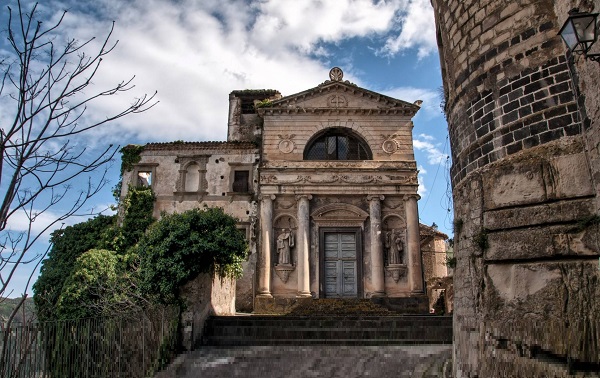
CASTIGLIONE DI SICILIA
Small town of very old origin, dominates the beautiful valley of Alcantara from above its rock. The town gets its name from “Castel Leone” which rises on the grindstone where 730 years b.c. an observation point was erected by the Greeks.
In the following centuries Normans, Swabians and Arabs each brought new culture and costumes.
In the historic center we find the Giudecca district, now made up of few buildings and which nonetheless bears witness to the presence of the Jews in this area, remaining there until at least 1492 when the edict of Ferdinand the Catholic ordered the expulsion of the same from the whole his kingdom.
Today,Castiglione offers an urban plan of great interest, original embroidery, excellent red wine and savory gastronomic delicacies (very good are the noodles whit nettle).
CASTROREALE
This village was probably founded by the Siculans in the 8th C. B.C. It immediately became of strategic importance for its position controlling the Milazzo valley. For this reason, during the centuries, the town was granted with generous privileges by several kings and was always quite rich.
The church of the Assunta flanked by a 16th century bell tower, houses a statue of Saint Cathrine made in 1534 by Antonello Gagini, also responsible for the “Annunciation” dated 1519 to be admired in the church of Saint Agata. In the church of Santa Maria del Gesù is the tomb of Geronimo Rosso again by A. Gagini.
Every 23/25th of August, great celebrations are held when a crucifix 12 meters height is carried in grand procession between two of the main churches of the town.


CESARÒ
In the Mt. Soro range of the southern Nebrodi Mountains this village stands on the watershed between the Cuto and Troina streams. In 1334 Frederick II of Aragon donated the village to Cristoforo Romano Colonna, an important doctor from Messina.
The economy is based on same small cottage industries and on agriculture.Little of the castle has survived. The main church is baroque, houses a 15th century Crucifix painted on a tablet. This is the place of lovers of mountain-excursions.
Nearby is the Femmina Morta pass. Near Cesarò you get splendid views embracing the western slopes of Etna, woods and an artificial lake, the so-called Biviere di Cesarò. The many possible excursions are best made with the aid of a guide.
FIUMEDINISI
In the south eastern Peloritan mountains, the village is clustered in a bend of the Fiumedinisi river, close to its mouth.
It is surrounded by beautiful mountains and small, rich valleys protected by a nature reserve. The most important monument is the castle “Belvedere” which is a medieval fortress at 750 metres a.s.l. with a breathtaking view on the Mediterranean Sea.
It is a place that oozes a rare charm for the loneliness of the ruins and the majesty of the landscape (dr Andrea Orlando). The main church conserves two 16th C. sculptures, by the Florentine M. Montanini and the artist from Messina R. Bonanno.

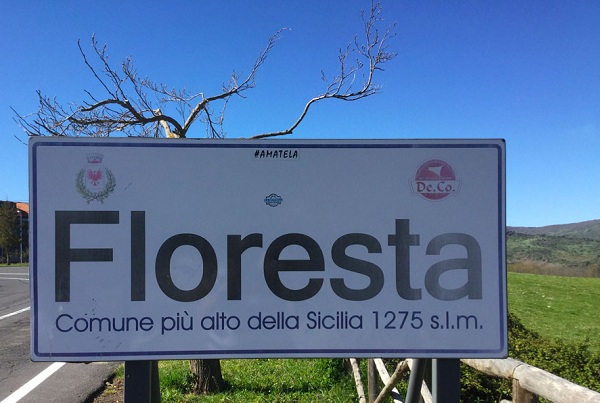
FLORESTA
Floresta, also Casal Floresta, is the highest Sicilian village, lying 1,275 meters above sea level in the Nebrodi Nature Park in a saddle between Mt Pistone and the Serre di Baratta. Its foundation seems to date back to when the Romans invaded and colonized Sicily, a time when the area was originally dense forest (floresta in Latin), with tall trees used by the Romans for building their ships and boats.
Today the immense forest is gone but it is still one of the coldest villages of south Italy having regularly about two meters snow each year. Set along the Nebrodi foothills, it offers the beauties of uncontaminated nature, breathtaking landscapes, healthy air and the fruits that nature offers.
The characteristics of the territory mean that the Municipality of Floresta, is inserted in the territory of the park of the Nebrodis, and also laps the territory of the River Park of the Alcantara river of which in the territory of the Municipality, the spring gushes. The territory of the Municipality is characterized by the vast expanse of wood included in the Nebrodi Park area. Floresta, offers the pristine beauty of a friendly nature.
FORZA D’AGRÒ
It is basically a medieval village dramatically overlooking the Ionian Sea at 15 Km (9 miles) from Taormina. Impressing are the surrounding spurs of the southern Peloritani mountains carved by the rivers which in winter erode their rocky banks.
The winding route to the village opens sweeping views of the coasts of Taormina and Calabria as far as the Strait of Messina. The village is dominated by the remains of the castle of the 16th century, today used as a cemetery. Forza d’Agrò has featured as the backdrop in a number of films, such as The Godfather trilogy.
Forza d’Agrò is a point of attraction. And so even the cinema has not been able to resist its charm, a mixture of beauty, tranquility and hospitality. Directors and actors of national and world caliber have approached his court (M. Brando, Al Pacino, D. Keaton, R. De Niro, J. Caan, T. Shire, M. Chevalier, A. Dickinson, Francis Ford Coppola, Jean Negulesco, Giovanni Soldati) managing to embed this jewel in films that have made, and do, the history of world cinema.
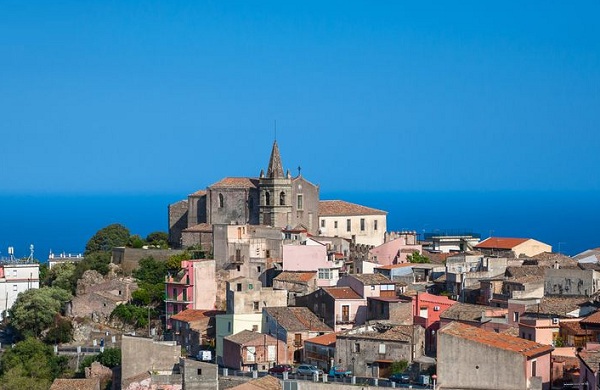
.

FRANCAVILLA
Surroundings Taormina, Francavilla di Sicilia is a medieval city which grew around a norman castle and the basilian monastery of San Salvatore di Placa, founded in 1092 upon the ruins of another.
We suggest to visit the old church Matrice (1493), whose main door is decorated with a vine leaf motif, and the convent of the Cappucini (1585) and its museum.
The Cappucini convent, built in 1585, is still in good condition. There is a splendid carved wood altar and two precious painted wood relics in the church. The name “Francavilla” comes from the French franc-ville, that is “Free town” because originally it was a tax-free town.
GALLODORO
Situated in the southern Peloritans mountains to the left of the Letojanni river, this village is not far from the Ionian coast. Formerly part of the Taormina territory, in 1952 it became independent.
Gallodoro has very ancient origins in Greek times, in a residential settlement near the Margi and S. Anna districts, which according to popular tradition was called Bocena. The findings of coins, shards of jugs and various pottery as well as graves, have also suggested the possible location of the city of Kallipolis, founded by the Chalcidians of nearby Naxos, the first Greek colony of Sicily.
The current village of Gallodoro dates back to the medieval period, when the first settlement was formed around the rural church of S. Teodoro Martire. Located in a place of passage between the lower and upper parts of the so-called Vallis Aurea, a name given by the Romans to the valley (or due to the fertility of the place or the existence of gold deposits) and from which today’s the name of Gallodoro, the church became in the course of the century the main place of worship of the rural community of Gallodoro.

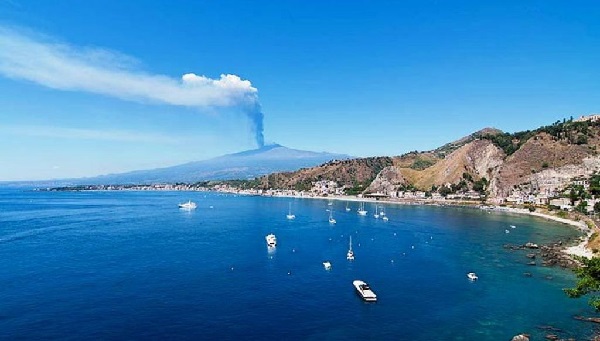
GIARDINI NAXOS
Situated below Taormina, with his lovely bay, a splendid sea, in a flat coastal position. Naxos was the first Greek colony in Sicily, founded in 735 B.C. by Chalcidians of Euboea. To commemorate the event, a monument in bronze was erected at the very tip of Naxos – Capo Schisó: the NIKE.
Naxos is archeologically one of the very few remaining chances to study the most ancient aspects of Greek urbanistic. The fertile sunny position, convenient for boats, must have been the reason for the choice made by the colonizers.
From the 18th C. onwards the village of citrus farmers and fishermen lived simply in this “village of gardens”, that’s where the name Giardini (the Gardens) comes from.
A visitor to Giardini will also recall that Garibaldi (the Italian hero who unified Italy starting a liberation-expedition from Sicily) left from the port of Giardini to land in Calabria. A monument commemorates the event.
GORGES OF ALCANTARA
Surroundings Taormina, The river Alcantara marks the boundary between the Provinces of Messina and Catania. The Greeks called the river “Akesines”, the Arabs “Al-Quàntarah” (“the bridge”). Along 27 Km of its lenght it brushes up against the territory of Randazzo and flows on towards the coast, separating the volcano Mt. Etna from the mountains to the north.
The spectacular gorges were created by the erosion and cooling of the lava flowing from the crater of Mount Dolce, between Linguaglossa and Randazzo, on the Etna massif.
The gorges show the inner part of the flow with the splendid, columnar fissures of magma rapidly cooled by the gushing water. More than 20m (57 ft) deep the gorges have bizarre basalt prisms dotted here and there with cool spontaneous vegetation.
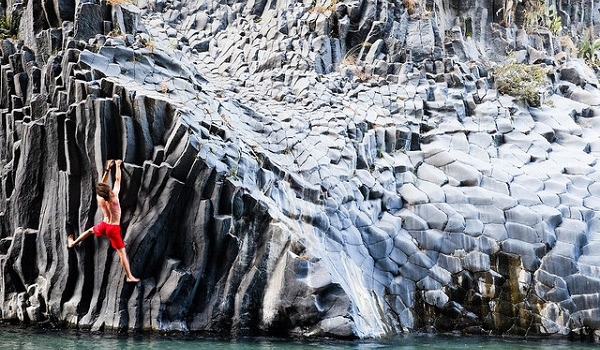
.

ITÀLA
Situated in the south eastern Peloritan mountains, Itála lies on the southern slopes of Monte Scuderi. The houses are scattered on the banks of the Itála river. Marina d’Itála is situated at its outlet to the Ionian Sea.
Existing in Norman times, the village was donated by Roger to the monastery of San Pietro, built by him. From 1928 to 1947 the village was annexed to that of Scaletta Zanclea. Its economy is based on agriculture, commerce, summer tourism and wood working.
The main church conserves two precious 14th century painted crucifixes. In the Croce district the Church of San Pietro (1093) has conserved the traits of the Norman Basilian construction: it has a Basilica plan with three naves and three apses, the exterior enlivened with blind and tiered arches in fired brick and limestone.
LETOJANNI
Situated on the Ionian coast north of Taormina, Letojanni extends along the eastern Sicilian trunk road, on both sides of the outlet of the Letojanni river. A small hamlet coming under Gallodoro, it expanded in the last century and with Gallodoro in 1880 it obtained administrational equality, maintained until 1952 when Letojanni and Gallodoro became two autonomous communes.
Letojann began to develop only with the passage of the provincial road and the railway. Letojann leapt to the headlines for having given birth to Francesco Durante, a world-renowned surgeon and scientist, who also wanted to build a clinic for himself, the original building having been properly restored and now home to the museum. The main square that houses the statue depicting it is named after Francesco Durante.
During the mid-1900s, the first family-run pensions were opened, then they moved to hotels and residential complexes, to which were added bars and restaurants. Within a few decades, Letojanni has turned into one of the most important Sicilian tourist resorts.Tourism has developed here, favored by good reception facilities, and flanks agriculture and fishing.


MANDANICI
This village is in the Peloritan mountains at the southern foot of Mount Cavallo. Mandanichium belonged to the Basilian monastery, founded by Roger the Norman, until 1475, when it passed to the secular clergy. The land is filled with vineyards, olive groves, orchards, woods and pasturelands, favoring stock rearing.
Mandanici, it is believed, however, that it was founded by the Greeks who, having moved to the settlement in eastern Sicily, founded one of the many camps also in the valley that today is home to Mandanici. The Mamertines, mercenary soldiers in Syracuse’s service in the period prior to the first Punic war, also settled there.
From 1061 the Normans arrived in Sicily, coming from northern Europe to reintroduce Christianity in Sicily. Count Ruggero had Mandanici build an abbey to which he gave the name of S. Maria Annunziata as a sign of Christian vote for the victory over the previous Arab domination. In the Norman period other works were born as evidence of Christianity, such as the Duomo, located in the then center of the Casale di Mandanici and the Mastroieni-Longo and Scuderi palaces.
SAVOCA
Surroundings Taormina, Savoca is situated on the low southern slopes of the Peloritan mountains. It was founded in the first half of the 12th century and was first mentioned in 1415 when it already belonged to the archibishops of Messina. The economy is agricultural and based mainly on the cultivation of citrus fruits.
Only ruins remain those of the norman castle. The church of San Michele, 15th century in origin, has two lovely gothic doors and houses a coeval painting of San Michele. The main Church, erected in the 16th century, has a lovely Renaissance door, two smaller gothic doors and a rose window; alongside it is a 15th C. bell tower.
The town, together with Forza d’Agrò, was the location for the scenes set in Corleone of Francis Ford Coppola’s The Godfather. The place is also famous for the Capuchin monastery where mummified bodies of prestigious town residents of 18th and 19th centuries are on display.
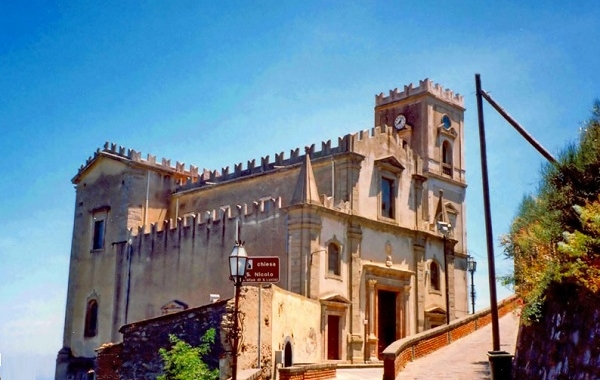
.










